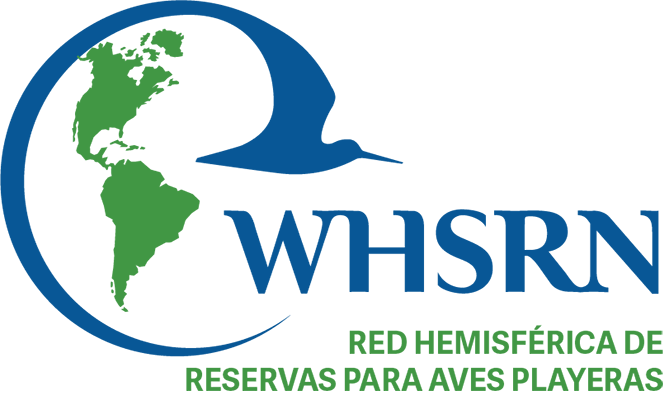During May on the Delaware Bay, Ruddy Turnstones are one of the flashiest shorebirds, but they are still often overshadowed by the superstar, super migrant Red Knots. But this is the year for Ruddy Turnstones to shine, as it is American Birding Association’s Bird of the Year. That should be reason enough, but just in case you needed a few more reasons to give these birds a little extra attention this spring…
1. They are world travelers.
Here in the Western Hemisphere, they winter along the coasts of the Pacific and Atlantic Oceans. We don’t typically find them as far south as Tierra del Fuego like some Red Knots, but they can be found in more northern regions of Chile and Argentina.
2. Their bright, distinct breeding plumage makes them easy to spot.
That makes them a great shorebird to engage new shorebird fans. This also makes them fun to paint!
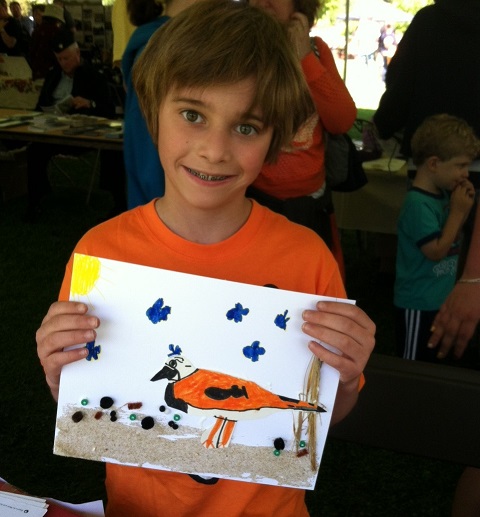
Young artist captures a Ruddy Turnstone in a beach habitat.
3. They literally leave no stone unturned.
Even the youngest bird enthusiast can use context clues to determine why they were named ‘turnstones’. When foraging, they use their shorter bill to overturn rocks to look for food or even dig in sand. Unlike other Delaware Bay shorebird visitors, they can sometimes be seen digging for horseshoe eggs when they are scarce on the surface.
4. Their eating habits resemble students in a school cafeteria.
They have an active, chattering, and sometimes aggressive foraging behavior. This not only makes them fun to observe, but this, combined with their ability to search for food, may give them an advantage when refueling at staging areas when resources are limited.
5. Males and females look a little different.
Unlike other Delaware Bay shorebirds it is possible to tell the males and females apart. Males have a bright, black and white head with a black and chestnut body. Females are duller with streaks of brown.
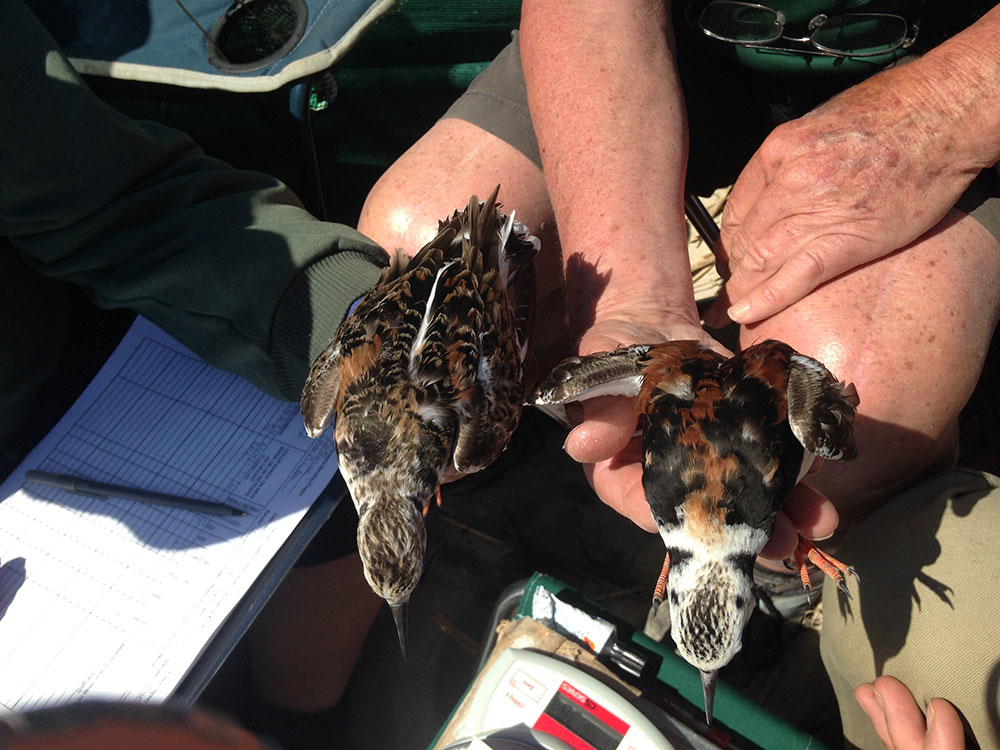
On the left a female Ruddy Turnstone and on the right a male.
6. Their chicks are adorable.
Ok, this is true of all shorebird chicks, but we just needed an excuse to share this photo. Nesting on dry tundra with moss and lichens in the far-north of the Arctic, Ruddy Turnstones will lay four eggs.
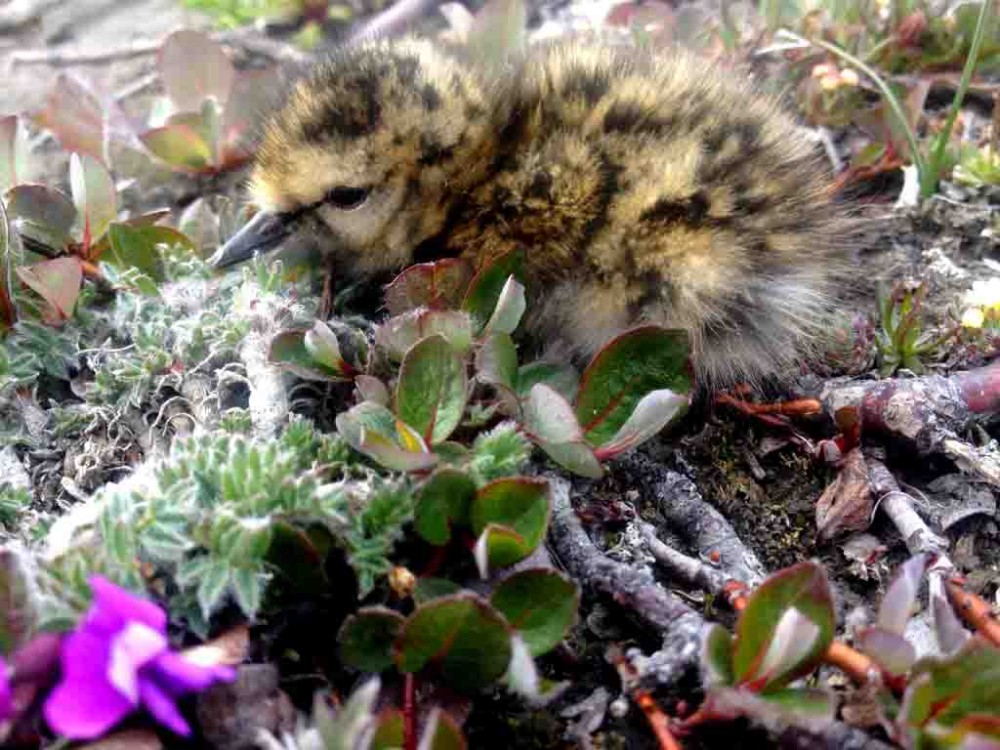
Ruddy Turnstone chick in the Arctic.
7. They are introverts.
Most of the year they are found only in small numbers or even solitary. Migration is the only time you will find them in large flocks at staging areas like the Delaware Bay.
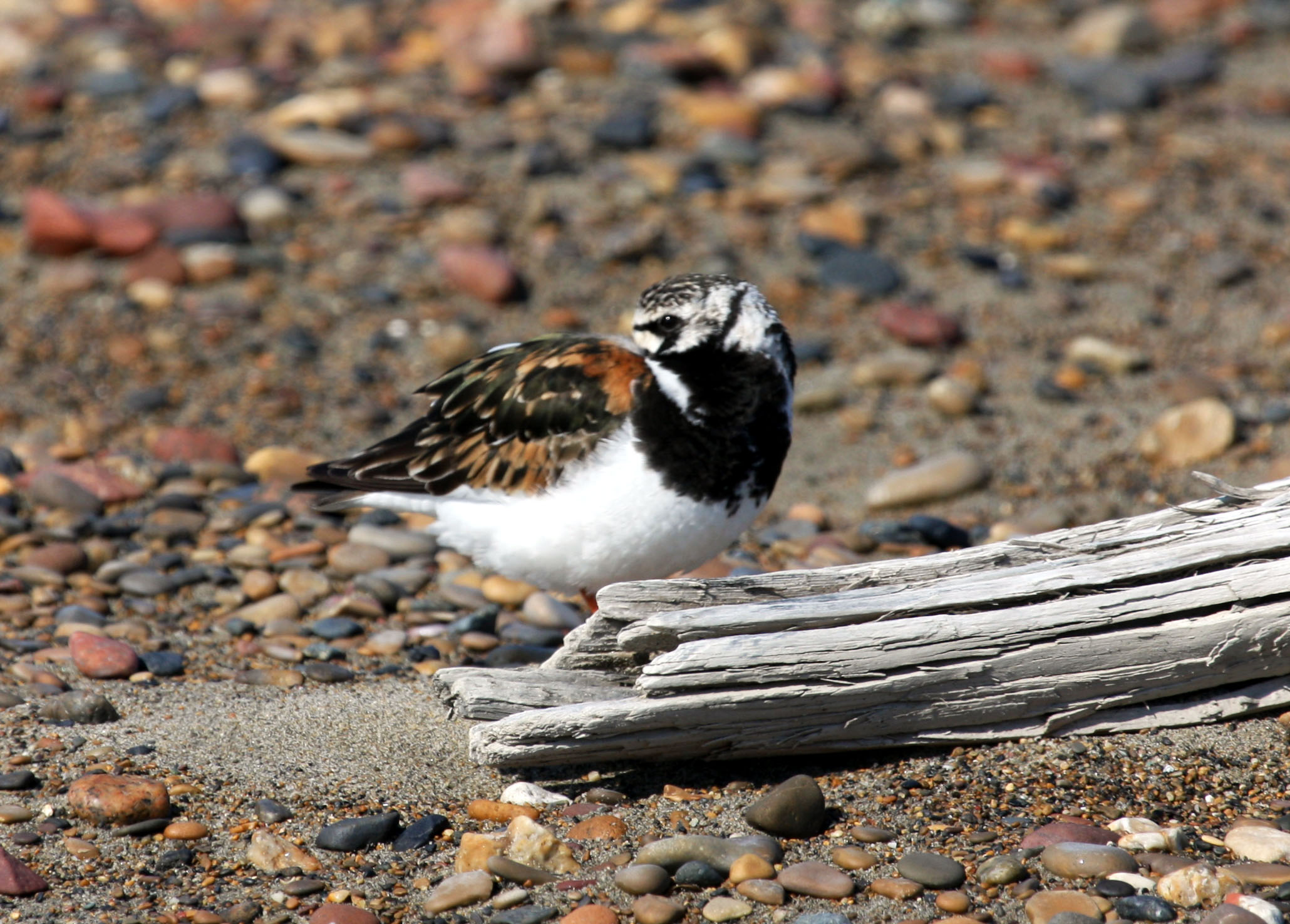
Lone Ruddy Turnstone on a stone beach.
8. They get the flu.
Unlike other shorebirds, Ruddy Turnstones arrive on the Delaware Bay without any avian flu antibodies. While here, they can have a flu outbreak that is not seen in the other shorebirds. Researchers are continuing to research this phenomena along with other aspects of the avian flu and shorebird populations. One theory for this infection is that since they are found in small numbers most of the year they are not exposed to viruses. When they gather with other shorebirds on the Delaware Bay, who are carrying the flu, they are more susceptible to infection.
Take Action for Ruddy Turnstones
Last year, biologists found that Ruddy Turnstones had their highest departure weights in many years. This is a good sign that conservation actions on the Delaware Bay are working. You can help keep momentum for Ruddy Turnstones and all Delaware Bay shorebirds by participating in a shorebird steward program, rescuing horseshoe crabs, posting youth signs in your community, or donating to support our work.
Many thanks to Life Along the Delaware Bay: Cape, Gateway to a Million Shorebirds by Larry Niles, Joanna Burger, and Amanda Dey as the main resource for this post. This book is a must read for those that are eager to learn more about Ruddy Turnstones and other migrating shorebirds.
Cover Photo: Ruddy Turnstones mixed in with Sanderlings, Red Knots, and Dunlin on Delaware Bay. Photo: Jan van de Kam.


